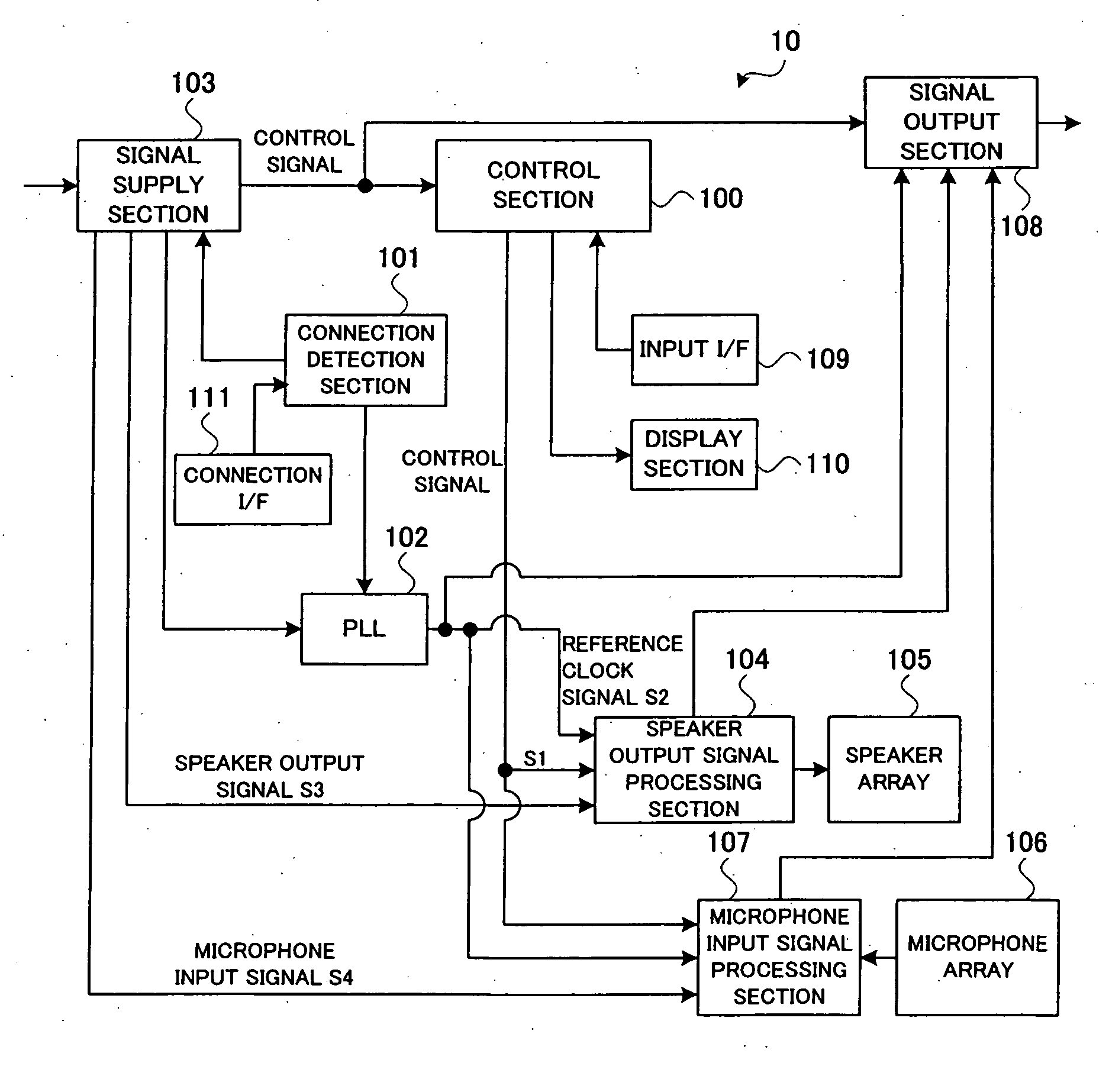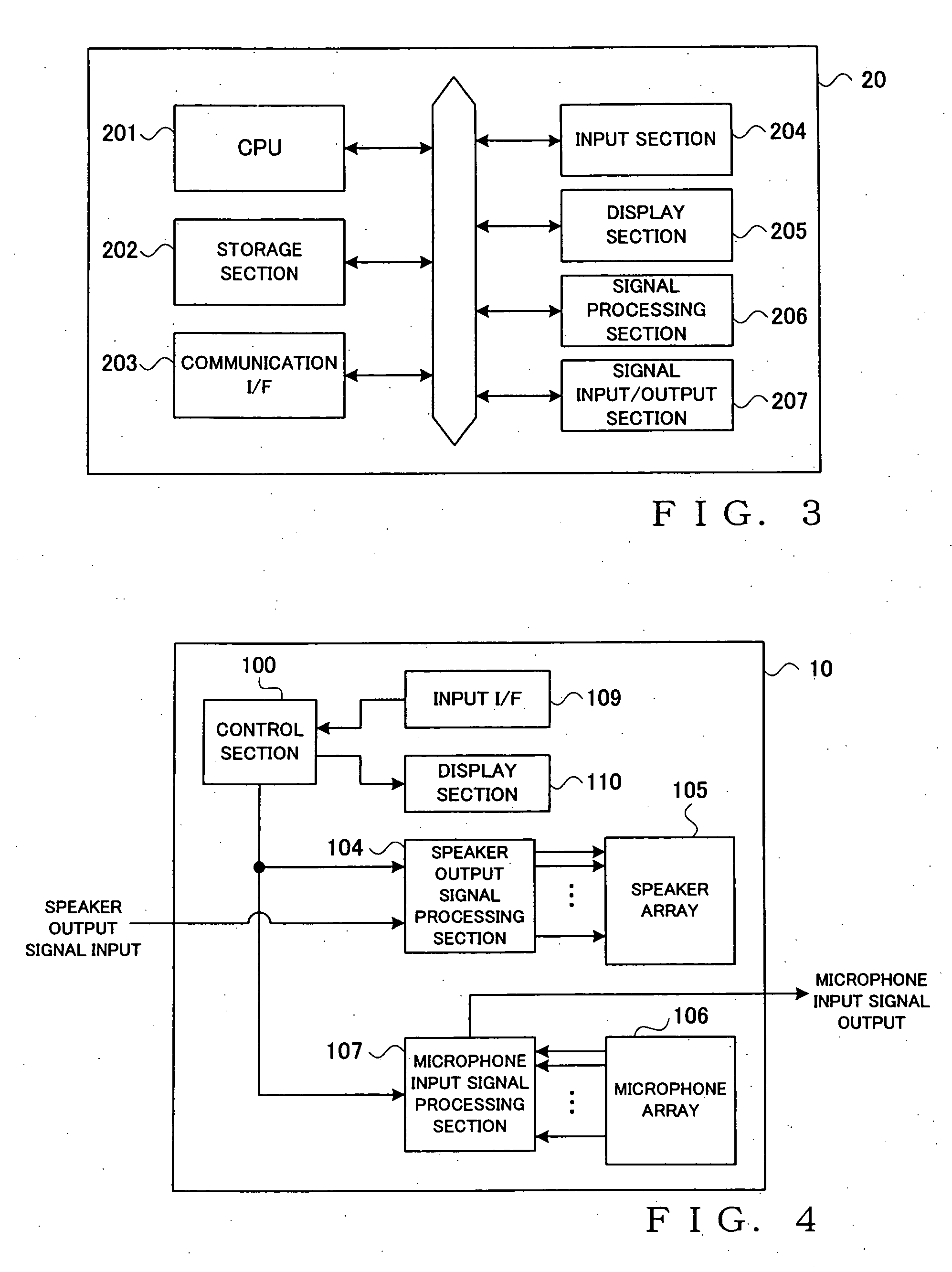Sound system, method for controlling the sound system, and sound equipment
- Summary
- Abstract
- Description
- Claims
- Application Information
AI Technical Summary
Benefits of technology
Problems solved by technology
Method used
Image
Examples
Embodiment Construction
[Construction]
[0020]
[0021]FIG. 1 is a block diagram showing a general setup of a sound system 1 in accordance with an embodiment of the present invention. As shown, the sound system 1 comprises a set of m (m represents an arbitrary natural number) sound units 10 (10-1, 10-2, 10-3, . . . , 10-m;) connected with one another, and a management apparatus 20 for controlling all of the sound units 10. Each of the sound units 10, except for two sound units located in opposite ends of the sound unit set, is connected with adjoining sound units, so that the sound units 10 constitute a chained-together sound unit set. Only the two sound units 10-1 and 10-m located in the opposite ends of the sound unit set are connected to the management apparatus 20. In the following description, the sound units 10-1, 10-2, 10-3, . . . , 10-m are assumed to be similar in function and will be referred to simply as “sound units 10” unless it is necessary to distinguish among the individual sound units.
[0022]F...
PUM
 Login to View More
Login to View More Abstract
Description
Claims
Application Information
 Login to View More
Login to View More - R&D Engineer
- R&D Manager
- IP Professional
- Industry Leading Data Capabilities
- Powerful AI technology
- Patent DNA Extraction
Browse by: Latest US Patents, China's latest patents, Technical Efficacy Thesaurus, Application Domain, Technology Topic, Popular Technical Reports.
© 2024 PatSnap. All rights reserved.Legal|Privacy policy|Modern Slavery Act Transparency Statement|Sitemap|About US| Contact US: help@patsnap.com










